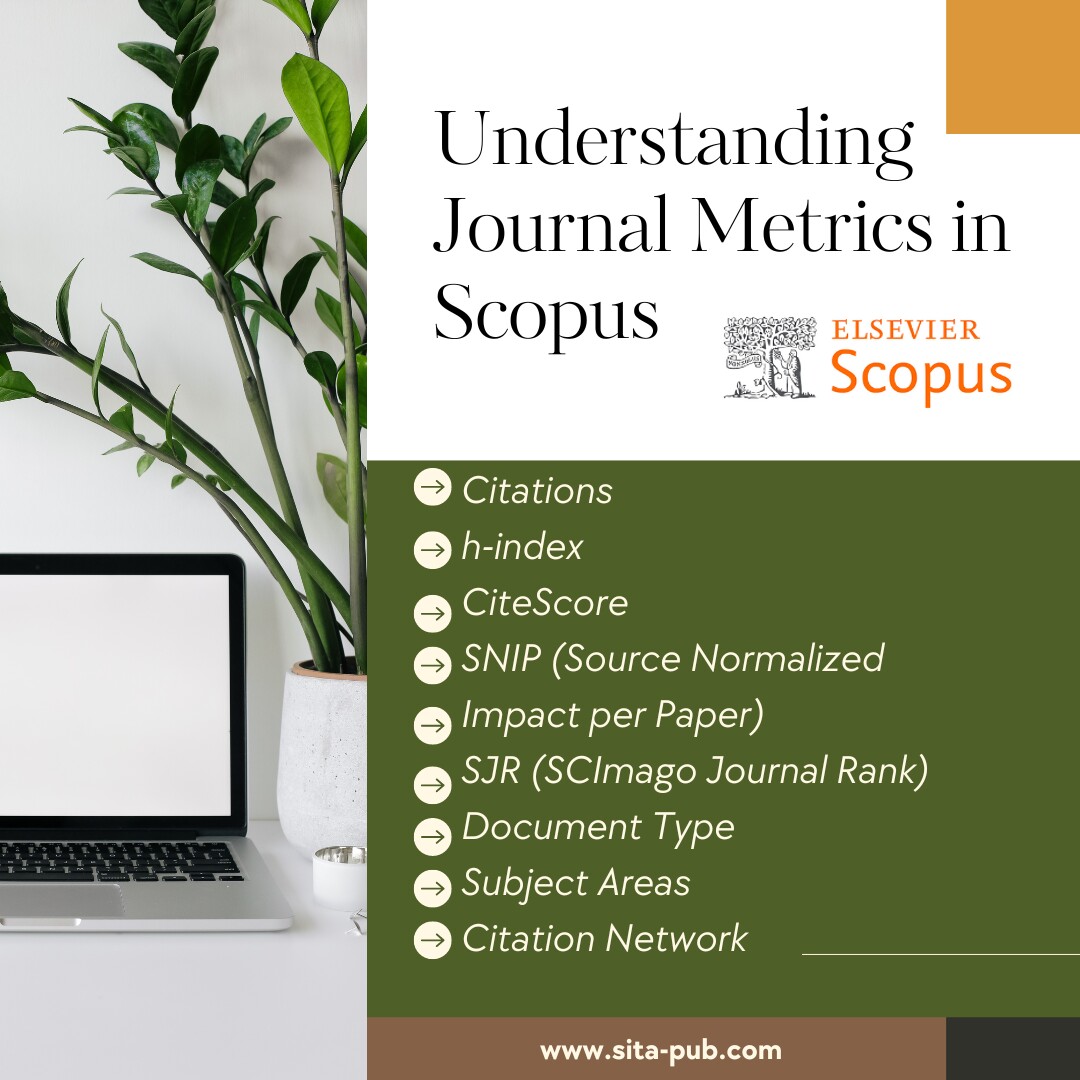Understanding Journal Metrics in Scopus


Scopus is a big database that collects research papers from all over the world. It's like a library for scientists and researchers, helping them find and understand the latest discoveries.

Publishing your research in a Scopus-indexed journal is a smart move for several reasons:
Scopus is very popular, so more researchers and scientists will see your paper.
Publishing in Scopus makes you look like a serious researcher, boosting your reputation.
Funding agencies often look at Scopus to see how good your research is, so it can help you get grants.
Scopus provides valuable data on the citation frequency of your publications. It allows you to gain deeper insights into how your research is influencing the field
Scopus uses several numbers to measure how good your research is. Here are some of the most important ones:
How Many Times Others Refer to Your Work
What it means: Citations are how many times other researchers mention your paper in their own work.
Why it matters: More citations mean your research is important and useful by other scientists.
A Balanced Score of Productivity and Impact
What it means: The h-index combines how many papers you've published and how often they're cited.
Why it matters: A higher h-index shows that you're a productive researcher whose work is influential.
Measuring a Journal's Influence
What it means: CiteScore tells you how often papers in a particular journal are cited on average.
Why it matters: A higher CiteScore means the journal is reptable in its field.
Adjusting CiteScore for Different Fields
What is means: SNIP is like CiteScore, but it considers differences in citation patterns across various research areas.
Why it matters: SNIP provides a more accurate assessment of a journal's influence within different fields.
A Journal's Reputation Based on its Connections
What it means: SJR measures a journal's reputation by its connections to other journals and how often those journals cite its papers.
Why it matters: A higher SJR score indicates that the journal is highly respected and its papers are influential within the academic community.
Understanding the Kind of Research in a Journal
What it means: Scopus classifies papers by type, like articles, reviews, conference papers, and book chapters.
Why it matters: Knowing the types of papers a journal publishes helps you decide if it's the right place for your research.
Finding Journals That Match Your Research
What it means: Scopus groups papers into specific research areas, like biology, physics, or psychology.
Why it matters: This helps you find journals that are interested in the kind of research you do.
Mapping the Connections Between Research
What it means: Scopus shows how papers are connected through citations, creating a network of research.
Why it matters: This network helps you see how different research areas are related and find influential papers in your field.
The most important metric depends on what you want to achieve with your research. If you want your work to reach many people, consider publishing in a journal with a high CiteScore or SNIP. If you're working in a new or specialized field, its better to choose a journal with a high SJR and a relevant subject area.
Understanding Scopus metrics allows you to assess the impact of your research and make informed publishing decisions.
Are you looking to maximize the impact of your research? SITA Academy's comprehensive publication support services can help you navigate the complex world of academic publishing with ease.
Our expert team provides personalized guidance on
journal selection,
professional manuscript editing,
and meticulous formatting assistance
to ensure your work meets the highest standards for peer-reviewed open-access journals. By partnering with us, you can focus on your research while we handle the complexities of the publication process. Take the first step towards expanding the reach and impact of your scholarly journal articles.
If you have any questions, inquiries, or would like to learn more about our services, please don't hesitate to reach out to us. Our dedicated team is ready to assist you.